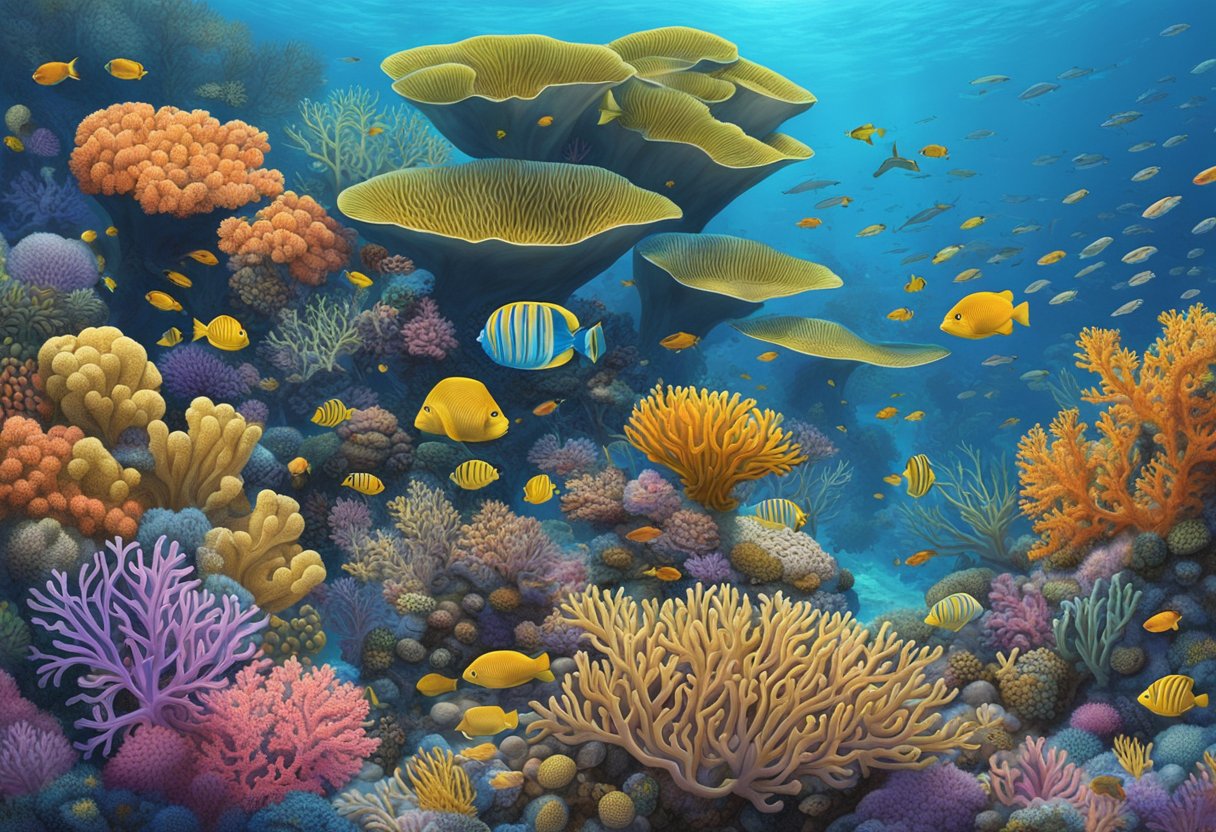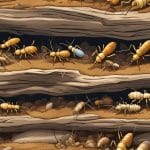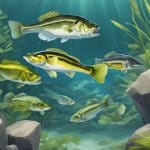Types Of Coral
Coral reefs are one of the most diverse ecosystems on the planet, providing habitats for a wide variety of marine species. Coral is a type of marine invertebrate that forms the foundation of these reefs. There are many different types of coral, each with its unique characteristics and adaptations.
Coral biology and classification are essential topics to understand when learning about the different types of coral. Coral belongs to the phylum Cnidaria and is classified into two subclasses: Hexacorallia and Octocorallia. Hexacorallia includes the stony corals, which have a hard, calcium carbonate skeleton, while Octocorallia includes the soft corals, which have a flexible, protein-based skeleton. There are over 2,500 different species of coral, and they come in a wide range of shapes, sizes, and colors.
Coral habitats and ecosystems are also crucial to consider when discussing the different types of coral. Coral reefs are found in shallow, warm waters around the world, and they provide a habitat for a diverse array of marine life. Coral reefs also protect coastlines from storms and erosion and are essential to the economies of many coastal communities. However, coral reefs are under threat from a variety of factors, including climate change, pollution, and overfishing.
Key Takeaways
- Coral reefs are diverse ecosystems that provide habitats for many marine species.
- Coral belongs to the phylum Cnidaria and is classified into two subclasses: Hexacorallia and Octocorallia.
- Coral reefs are under threat from a variety of factors, including climate change, pollution, and overfishing.
Coral Biology and Classification

Coral reefs are diverse ecosystems that are home to many different species of coral. Coral is classified as an animal, specifically as a member of the phylum Cnidaria and the class Anthozoa. The basic living unit of the class Anthozoa is the polyp, which can occur either singularly or in colonies. Coral polyps are tiny invertebrates that secrete calcium carbonate to form a hard skeleton, which provides a substrate for the growth of the coral colony.
Coral Anatomy and Polyps
Coral polyps are small, cylindrical animals that are typically less than one inch in diameter. They have a simple body plan consisting of a mouth surrounded by tentacles, and a sac-like body cavity. Coral polyps are sessile, meaning that they are attached to the substrate and do not move around. They have a symbiotic relationship with zooxanthellae, which are algae that live inside the coral polyps and provide them with nutrients through photosynthesis.
Coral Species Diversity
There are over 6,000 species of coral, which are divided into two subclasses: Hexacorallia and Octocorallia. Stony corals, which are the most common type of coral found in reefs, belong to the subclass Hexacorallia. Soft corals, which are less common and have a more flexible skeleton, belong to the subclass Octocorallia. Coral species can also be classified based on their growth form, which can be branching, massive, or encrusting.
The Coral Life Cycle
Coral reproduction can occur both ually and aually. During ual reproduction, coral polyps release eggs and sperm into the water, which combine to form a free-swimming larva called a planula. The planula eventually settles on the substrate and grows into a new coral polyp. Aual reproduction can occur through budding, where a new polyp grows from the parent polyp, or fragmentation, where a piece of the coral breaks off and grows into a new colony.
In conclusion, coral reefs are complex ecosystems with a diverse array of coral species. Understanding the biology and classification of coral is essential for conservation efforts to protect these valuable ecosystems.
Coral Habitats and Ecosystems
Reef Structures and Formation
Reef-building corals are found in tropical waters and form the foundation of coral reefs. These corals are colonial animals that secrete calcium carbonate to form a hard, protective skeleton. Over time, the accumulation of these skeletons creates the complex structures that we recognize as coral reefs.
Coral reefs are found in a variety of habitats, including lagoons and atolls. Lagoons are shallow, protected areas of water that are surrounded by coral reefs. Atolls are circular or horseshoe-shaped formations of coral that surround a central lagoon. Both lagoons and atolls provide important habitats for a variety of marine life.
Coral’s Role in Marine Ecosystems
Coral reefs are some of the most diverse ecosystems on the planet, providing habitat for a vast array of marine life. In fact, coral reefs are estimated to support up to 25% of all marine species.
Coral’s role in marine ecosystems extends beyond providing habitat, however. Coral reefs also play a crucial role in maintaining the health of the ecosystem as a whole. For example, coral reefs help to protect shorelines from erosion by absorbing the energy of waves. They also help to maintain water quality by filtering pollutants and excess nutrients.
Overall, coral habitats and ecosystems are incredibly important for the health of marine life and the planet as a whole. By understanding the role that coral plays in marine ecosystems, we can work to protect these fragile and important habitats.
Threats to Coral Reefs
Coral reefs are facing a variety of threats that are endangering their existence. Some of the most significant threats to coral reefs are coral bleaching and climate change, as well as human impact and conservation efforts.
Coral Bleaching and Climate Change
Coral bleaching is a phenomenon that occurs when coral reefs become stressed due to changes in their environment. This stress can be caused by a variety of factors, including increased ocean temperatures, pollution, and ocean acidification. When coral reefs become stressed, they expel the algae that provide them with their vibrant colors, leaving them white or pale.
Climate change is one of the major causes of coral bleaching. As the Earth’s atmosphere warms, so do the oceans, causing coral reefs to become stressed and more susceptible to bleaching. In addition to rising temperatures, climate change can also lead to ocean acidification, which can make it more difficult for coral reefs to build their skeletons.
Human Impact and Conservation Efforts
Human impact is another major threat to coral reefs. Pollution from agricultural runoff, sewage, and other sources can harm coral reefs, as can overfishing and destructive fishing practices. Coastal development can also lead to the destruction of coral reefs and their habitats.
Conservation efforts are crucial to protecting coral reefs from these threats. Efforts to reduce pollution and overfishing can help to protect coral reefs and their habitats. Protecting coral reefs can also involve creating marine protected areas where fishing and other activities are restricted.
Overall, coral reefs are facing a variety of threats that are endangering their existence. Protecting these vital ecosystems will require a concerted effort to address the many factors that are contributing to their decline.
Coral and Symbiotic Relationships
Coral reefs are one of the most diverse ecosystems on the planet, and they are home to a variety of marine fauna. Coral reefs are also known for their symbiotic relationships with other marine organisms, including algae and fish. These relationships are essential for the survival of coral reefs, as they provide the coral with the necessary nutrients and energy to grow and thrive.
Coral and Algae
One of the most important symbiotic relationships in coral reefs is between coral and algae. The algae, known as zooxanthellae, live inside the coral’s tissues and provide the coral with food through photosynthesis. In return, the coral provides the algae with a protected environment and access to the nutrients they need to survive.
This relationship is so important that without it, coral reefs would not exist. The algae provide up to 90% of the energy that coral needs to grow and reproduce. When coral is stressed, such as by high water temperatures or pollution, it can expel the algae, a process known as coral bleaching. This can be fatal for the coral if the algae do not return.
Coral and Marine Fauna
Coral reefs are also home to a variety of marine fauna, including fish, crustaceans, and mollusks. Many of these organisms have symbiotic relationships with the coral. For example, some fish species feed on the algae that grow on the coral, helping to keep the coral free of excess algae that can harm it.
Other fish species have a more direct relationship with the coral. Some species, such as the cleaner wrasse, clean parasites and dead tissue from the coral, helping to keep it healthy. In return, the coral provides the fish with a safe place to live and access to food.
Overall, the symbiotic relationships between coral and other marine organisms are essential for the survival of coral reefs. Without these relationships, coral reefs would not be able to grow and thrive, and the diverse marine life that depends on them would be at risk.
Interactions with Humans
Coral reefs are not only valuable ecosystems, but they also provide a significant source of income and employment for many coastal communities around the world. However, human activities such as overfishing, pollution, and climate change have put these delicate ecosystems at risk.
Coral in Tourism and Economy
Coral reefs attract millions of tourists each year, generating billions of dollars in revenue for local economies. Many coastal communities depend on tourism for their livelihoods, and coral reefs are a major draw for visitors. However, unregulated tourism can also have negative impacts on coral reefs, such as damage from boat anchors, pollution from tourist activities, and physical damage from snorkeling and diving.
Scientific Research and Education
Coral reefs are also important for scientific research and education. Scientists study coral reefs to better understand the complex interactions between marine species and their environment. Coral reefs are also used as a tool for education, teaching people about the importance of marine conservation and the need to protect these fragile ecosystems.
In conclusion, coral reefs play a vital role in the economy, tourism, and scientific research. However, it is important to ensure that human activities do not cause further damage to these delicate ecosystems. By implementing sustainable practices and protecting coral reefs, we can ensure that future generations will be able to enjoy these valuable ecosystems.






